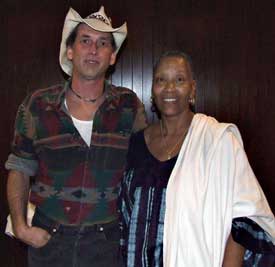
Follow workers.org on



RED HOT: TRAYVON MARTIN
CHINA,
AFGHANISTAN, FIGHTING RACISM, OCCUPY WALL STREET,
PEOPLE'S POWER, SAVE OUR POST OFFICES, WOMEN, AFRICA,
LIBYA, WISCONSIN WORKERS FIGHT BACK, SUPPORT STATE & LOCAL WORKERS,
EGYPT, NORTH AFRICA & MIDDLE EAST,
STOP FBI REPRESSION, RESIST ARIZONA RACISM, NO TO FRACKING, DEFEND PUBLIC EDUCATION, ANTI-WAR,
HEALTH CARE,
CUBA, CLIMATE CHANGE,
JOBS JOBS JOBS,
STOP FORECLOSURES, IRAN,
IRAQ, CAPITALIST CRISIS,
IMMIGRANTS, LGBT, POLITICAL PRISONERS,
KOREA,
HONDURAS, HAITI,
SOCIALISM,
GAZA



|
|
Virtually ignored
Indigenous nations hit hard by hurricanes
By
Larry Hales
Published Sep 23, 2007 9:09 PM
Seldom mentioned, seldom held in the conscience of most people when Hurricanes
Katrina and Rita are spoken about, is the devastating effect the storms had on
Indigenous peoples on the Gulf Coast. Just as was and is the case for New
Orleans, the plight of the Indigenous people is a history of oppression
beginning with the colonization of the Americas by Europeans and the genocide
committed against Indigenous peoples.
|
Witness Tony Sferlazza,
left and tribunal
prosecutor,
Efia Nwangaza
in
New Orleans Aug. 31.
WW photo: Monica Moorehead
|
A number of Indigenous nations—the Pointe-au-Chien Tribe, the Isle de
Jean Charles Indian Band of Biloxi-Chitimasha, the Grand Caillou-Dulac Band and
the Biloxi-Chitimasha Confederation of Muskogees—were in the path of the
twin storms.
Tony Sferlazza, a member of the Lakota nation, testified at the International
Tribunal on Hurricanes Katrina/Rita about the history of the Houma nation and
the effect of the hurricanes and oppression on the Houma people.
The Houma people live in settlements in lower Plaquemines, lower St. Bernard,
and lower Jefferson parishes, and the bulk of the nation lives in the lower
bayou region of Lafourche and Terrebonne parishes southwest of New Orleans.
According to the Houma nation website: “On Aug. 29, 2005, Hurricane
Katrina swept ashore on the Louisiana coast. Among those communities devastated
by her impact were the small Houma Indian settlements in lower Plaquemines,
lower St. Bernard, and lower Jefferson parishes. The population of these Indian
settlements, some 3,500 tribal citizens, was hit hard by the storm. Over one
thousand of that number were left homeless, their homes completely destroyed by
wind and water.” (unitedhoumanation.org)
The larger population of the Houma nation in the lower bayou region was further
threatened by Hurricane Rita, while the settlements in lower Plaquemines were
trying to cope and deal with the devastation wrought by Katrina. The website
states about Hurricane Rita: “The ‘near miss’ by Rita pushed
a massive storm surge into the bayous and our more populous settlements in
lower Terrebonne went underwater. The Houma communities of Dulac, Grand
Caillou, Montegut, Pointe-aux-Chene, and Isle de Jean Charles were inundated
with seven or eight feet of water. The tribe now had an additional four
thousand of its citizens with houses devastated by the effects of this new
storm.”
After the storm, the Indigenous nations were almost completely ignored. Houma
nation Chief Brenda Dardar-Robichauxsaid in the Houma nation newspaper:
“We are an Indian tribe here that is falling through the cracks. Nobody
has made contact with us except the native media. Everything we are doing has
been a grassroots effort, and it’s taken weeks to get this far with the
help of many volunteers and private donations. We’re basically doing it
on our own.”
Because the Houma nation—though recognized by the state of
Louisiana—has not been federally recognized, the situation for its
members was more difficult, though they have fought on record for federal
recognition since 1979.
The first petition was filed in 1979, and findings were released in 1994. The
reason given by the Bureau of Indian Affairs is that the United Houma nation of
today does not fulfill the criteria noted in Part 83 of Title 25 the Code of
Federal Regulations, “Procedures for Establishing that an American Indian
Group Exists as an Indian Tribe.” Some of the criteria are:
a. The petitioner has been identified as an American Indian entity on a
substantial continuous basis since 1900.
b. A predominant portion of the petitioning group comprises a distinct
community from historical times until the present.
Neither the petitioner or its members are the subject of congressional
legislation that has expressly terminated or forbidden the Federal
relationship.
Set aside the ridiculousness of an oppressed people, especially an Indigenous
nation, having to qualify itself to its historical oppressor—an oppressor
that committed genocide against its people and continues to deny this great
historical evil and justifies it by a doctrine that is a mere cloak for white
supremacy. The doctrine is that the Americas appeared before Columbus almost as
an epiphany as the slave trader and mass murderer bumbled his way across the
Atlantic in search of a quick route to Asia.
History attests to the claims of the Houma people, that they had settled
originally the area where Angola prison is and moved to the area they now
inhabit. According to the United Houma nation’s website, the tribe was
noted in the journal of LaSalle in 1682.
In 1706, the tribe moved southward and their population was noted from then on
through various encounters with European conquerors and other Native
nations.
There are a number of issues at heart when considering why the nation is being
denied federal recognition. One is the continual destruction of the coastal
areas near where their tribal lands are. There is ample evidence since the
hurricanes and many times before that of the oil industry’s effect on the
coastal region.
According to the testimony of Tony Sferlazza, while the Houma people were
trying to return home and build their community, it was decided that 18 new oil
rigs would be built off the coast, further devastating the area around New
Orleans and leaving the people along the Gulf Coast, especially New Orleans and
the Native nations, more vulnerable to hurricanes. The marsh lands that are
being destroyed had been a natural buffer to weaken storms coming ashore.
The writer attended the International Tribunal on Katrina and Rita in New
Orleans.
Articles copyright 1995-2012 Workers World.
Verbatim copying and distribution of this entire article is permitted in any medium without royalty provided this notice is preserved.
Workers World, 55 W. 17 St., NY, NY 10011
Email: [email protected]
Subscribe [email protected]
Support independent news DONATE |
|


